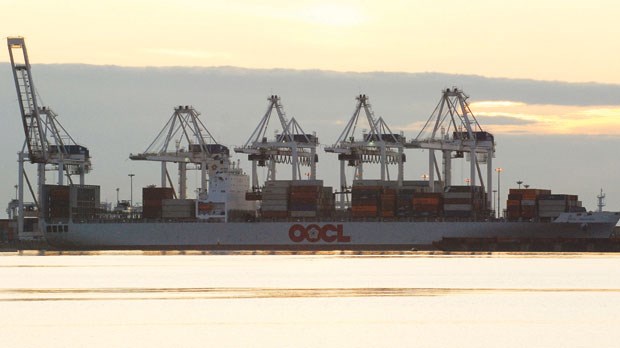Opponents of the Vancouver Fraser Port Authority’s expansion plans for Roberts Bank are throwing cold water on recent statistics that indicate strong container growth.
The port recently released its 2017 numbers for cargo that state overall volume through the port reached a record high of 142.1 million tonnes, up five per cent from 2016. Sectors experiencing strong growth include containers and bulk grain, both of which hit new records in 2017, according to the port authority.
The port said overall container traffic (measured by TEUs or 20-foot equivalent units) was up 11 per cent over 2016 to reach a record of 3.3 million TEUs. According to the port, volumes were driven by a global upswing in economic activity, which boosted Canadian export sales and overall strength in the trans-Pacific container market.
Against Port Expansion’s Roger Emsley, however, contends the port isn’t telling the whole story when it comes to the numbers.
He said although 2017 saw an 11 per cent increase, it’s important to look at it in broader context over a number of years. Emsley said 2016 was a depressed year, so the increase year-over-year only seems large.
He said container volumes are only up six per cent over 2015 and annual increases are in the three per cent range.
“Growth is well below port forecasts,” Emsley said. “Current capacity and planned expansions at Vancouver area terminals are sufficient for a number of years to come. The real growth in Canada’s container volumes is at Prince Rupert. Its container terminal is expanding rapidly such that west coast Canada will have sufficient container capacity to satisfy Canada’s trading needs for the foreseeable future.
“Prince Rupert is a much better gateway to Asia than Vancouver. It is two days sailing closer to Asia than Vancouver. It has better rail access to Eastern Canada. Vessels arriving at the port have an easy run into port versus the congested route into Vancouver.”
APE continues to slam the business case and environmental impacts of the port authority’s proposed Terminal 2 expansion. The group points to Environment and Climate Change Canada’s recent critical assessment of potential residual adverse impacts on biofilm which is used by migratory birds.
The three-berth T2 proposal, which would double container handling capacity at Roberts Bank, is currently under review by a federal panel. Public hearings are expected to be scheduled this year.



